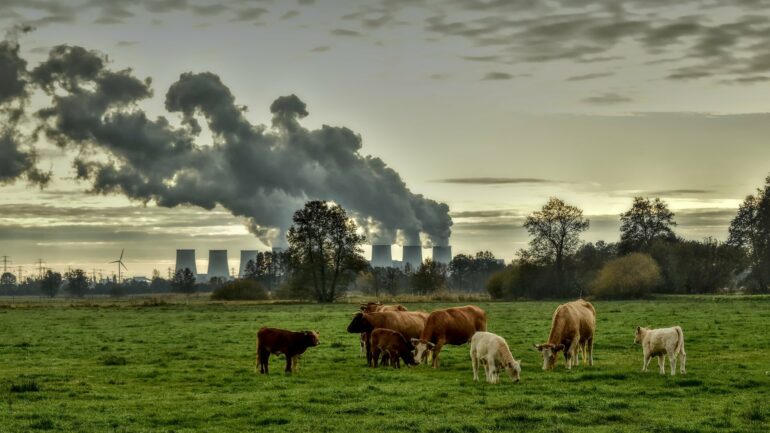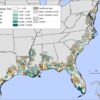Researchers have developed a new method for the successive calculation of the emission reductions that are necessary for achieving temperature targets, such as the 2°C goal.
The calculation method is based solely on observations rather than models and scenarios. According to the study, international climate policy has to become even more ambitious.
The central aim of the Paris climate agreement is clear: Limiting man-made global warming to well below 2°C.
This limit requires a reduction in greenhouse gas emissions to net zero. But what do the intermediate stages look like? How big should the reduction in emissions be within the next five, ten, or fifteen years? And which emissions pathway should we follow?
There is no consensus on these issues between countries, which complicates the active implementation of the Paris Agreement.
A research team led by the University of Bern has now developed a new method to determine the necessary reduction in emissions on a continuous basis.
The main idea: Instead of complex climate models and scenarios, the observed relationship between warming and emissions is applied, and the reduction path is adapted repeatedly according to the latest observations.
This new approach has just been published in the journal Nature Climate Change.
A new calculation method for the emission reduction path
To date, climate models have been used to calculate possible emissions pathways to the net zero goal. These pathways are based on scenarios including economic and social developments.
“These calculations for the emission paths are subject to large uncertainties. This makes the decision-making more difficult and might be one reason why the promised reductions made by the 194 signatory countries to the Paris Agreement remain insufficient,” said lead author Jens Terhaar, explaining the background to the study. Like most of the other authors, Terhaar is a member of the Oeschger Center for Climate Change Research at the University of Bern.
“Since the climate agreement actually aims at regulating temperature, we thought to specify an optimal emissions reduction path for this purpose which is independent of model-based projections,” Terhaar added.
According to this initial idea, a calculation method has emerged which is based exclusively on observation data: on the one hand, global surface temperatures in the past, and on the other hand, CO2 emissions statistics.
Co-author Professor Pierre Friednlingstein, from the Global Systems Institute at the University of Exeter, said, “This new climate modeling framework is quite simple in essence: knowing the current warming and the desired climate target (such as 1.5 or 2°C), the framework prescribes a greenhouse gases emission trajectory for the next five years and the climate model simulates the resulting climate change.
“The framework reassesses this new ‘current warming’ and adapts the emission trajectory for the next five years, and so on.
“For example, if the model is ‘running hot,’ the framework will adapt and make deeper emission reduction.
“Doing so, we are mimicking the real-world UN global stocktake process where all countries are requested to revise their national mitigation ambitions every five years.”
The Paris Agreement calls for a stocktake of the necessary reductions in global emissions every five years.
“The new Bern calculation method is ideally suited to support the stocktake mechanism of the Paris Agreement, as it enables the emission reductions to be recalculated regularly on an adaptive basis,” said co-author Fortunat Joos of the Oeschger Center.
For this purpose, a new algorithm has been developed which is known as the AERA (adaptive emissions reduction approach).
In simple terms, the algorithm correlates CO2 emissions with rising temperatures, and is adjusted using a control mechanism.
In this way, the current uncertainties in the interaction between these variables can be put aside.
“Our adaptive approach circumvents the uncertainties, so to speak,” explains Fortunat Joos.
“In the same way that a thermostat continuously adjusts the heating to the required room temperature, our algorithm adjusts the emission reductions according to the latest temperature and emissions data.
“This will allow us to approach a temperature goal, such as the 2°C goal, step-by-step and with specific interim goals.”
Stronger emissions goals and effective implementation
“The AERA method already confirms that international climate policy must be far more ambitious,” said Terhaar.
According to the Bern study, to achieve the 2°C goal, global CO2 emissions would have to fall by 7% between 2020 and 2025.
They actually increased by approximately 1% in 2021 in comparison with 2020, though. According to the algorithm, limiting global warming to 1.5°C would require as much as a 27% reduction by 2025.
“We need far stricter emissions goals than those to which nations have committed,” said Thomas Frölicher, co-author of the study from the Oeschger Center, “and above all else, effective implementation of the goals.”
The researchers hope that the new calculation method will succeed in finding its way into international climate policy.
“The AERA algorithm is already attracting a lot of interest in the climate research community, as it can also be applied to climate modeling,” said Jens Terhaar.
Until now, climate models with prescribed greenhouse gas concentrations have been used.
This meant that at the end of the 21st century, the warming for a specific greenhouse gas concentration was very uncertain.
When using the climate models with the AERA, however, emissions are continuously adjusted according to the calculated temperature and the intended temperature goal.
On this basis, the model temperature is eventually stabilized at the intended level and all the models simulate the same warming, but with different emission pathways.
“The AERA enables us to study impacts such as heat waves or ocean acidification for different temperature goals—such as 1.5°C versus 2°C versus 3°C—on a consistent basis and with state-of-the-art models,” said Terhaar.
Worldwide, 11 research groups have already started to apply the algorithm under the leadership of the University of Bern in order to study such impacts.
More information:
Jens Terhaar et al, Adaptive emission reduction approach to reach any global warming target, Nature Climate Change (2022). DOI: 10.1038/s41558-022-01537-9
Provided by
University of Exeter
Citation:
Reliable planning tool for the emissions path to achieving the Paris temperature goal (2022, December 2)



